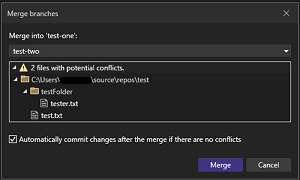News
Visual Studio Ditches Edge Developer Tools
There are a raft of minor improvements listed in the March 14 announcement of Visual Studio 2022 v17.6 Preview 2, but accompanying release notes note that the IDE is ditching the baked-in Edge Developer Tools.
The release notes accompanying Visual Studio 2022 v17.6 Preview 2, announced March 14, point to a an item on Microsoft's Developer Community site titled "Edge Developer Tools no longer included in Visual Studio," posted March 7.
Authored by Microsoft's Tim Heuer on March 7, it says;
Starting in Visual Studio 17.5 we had included a version of the Edge Developer Tools within Visual Studio for ASP.NET developers. In updated service versions and later, the Edge Developer Tools will no longer be included in the installation of a version of Visual Studio with the ASP.NET Web Workload.
At this time we've decided that the integration of the tools with the developer workflow is not presently at the state desired for the team. We apologize for this inconvenience this may cause a small set of developers who look for this to be integrated.
As a workaround, the Edge Developer Tools are, of course, available in the Edge browser and can be used from there with your running app while debugging. You will not get the benefit of things like CSS sync support that we previously had, but the Edge Developer Tools still provide powerful insight to your DOM and conditions of your web app.
What's New in Visual Studio 2022 v17.6 Preview 2
Meanwhile, the new preview details new features and improvements for game developers, mobile developers, C++ developers and more. Specific improvements affect Git, debugging/diagnostics and C++ editing workflows, along with support for hosting and deploying Visual Studio layouts from an intranet web site.
Here are some highlights:
- Improved Merge Dialog: "Updates to our Merge Dialog make it easier to understand how many files are being affected by the merge operation and warn you if there might be conflicts. You also have more control over when you'd like automatically commit your changes after the merge."
 [Click on image for larger view.] Improved Merge Dialog (source: merge_dialog).
[Click on image for larger view.] Improved Merge Dialog (source: merge_dialog).
- Git Stage and Commit During Build: Responding to customer feedback, the team added the ability to stage changes and commit staged items during a build, saying, "Committing directly is a risky operation since your files may change, but now you can stage them, verify your files are correct, and commit them -- all while a build is running."
-
Debugging Breakpoint Groups: This feature helps users simplify the debugging process with the ability to organize breakpoints into specific groups and manage them as a single entity, which reportedly makes debugging, testing and troubleshooting more efficient.
Instrumentation Profiling for C++: With new C++ support for the isual Studio Instrumentation tool, devs can now go to Debug > Performance Profiler and select “Instrumentation” from the Profiler window that shows up. "The Instrumentation Data View presents a list of functions ordered by longest-running, making it easier to identify potential bottlenecks. Additionally, the Hot Path section displays the call stack for the functions that are consuming the most CPU, providing further insight into performance issues."
There are several other C++ improvements, including the "Create Member Function" feature that can help users quickly add C++ constructors and equality operators.
- Host and Deploy Visual Studio Layouts from Your Intranet: "Many companies that want to tightly control the Visual Studio version their organizations use, or whose client machines don't have access to the internet, currently have the option to download and store Visual Studio in a 'layout' that is made available via a file network share for their developers to install and update from. Starting with Visual Studio 2022 version 17.6 Preview 2, organizations will now be able to host and deploy layouts on an intranet website in addition to a file share. Using an intranet location can simplify layout maintenance and improve installation performance, particularly for those organizations that currently use multiple global network file shares. The scenario is currently targeted for IT Administrators to remotely deploy from."
- HLSL Tools Extension by Tim Jones This provides syntax highlighting, statement completion, go to definition and more more functionality for HLSL (High Level Shading Language) used in game development and rendering applications. "The popular HLSL Tools extension by Tim Jones is now available as part of Visual Studio. Power up your HLSL development productivity with syntax highlighting, statement completion, go to definition, and more!"
- Android Manifest Editor: This lets coders more easily set available properties and request device specific permissions, which is enacted by double-clicking on a AndroidManifest.xml file from the Solution Explorer.
About the Author
David Ramel is an editor and writer at Converge 360.